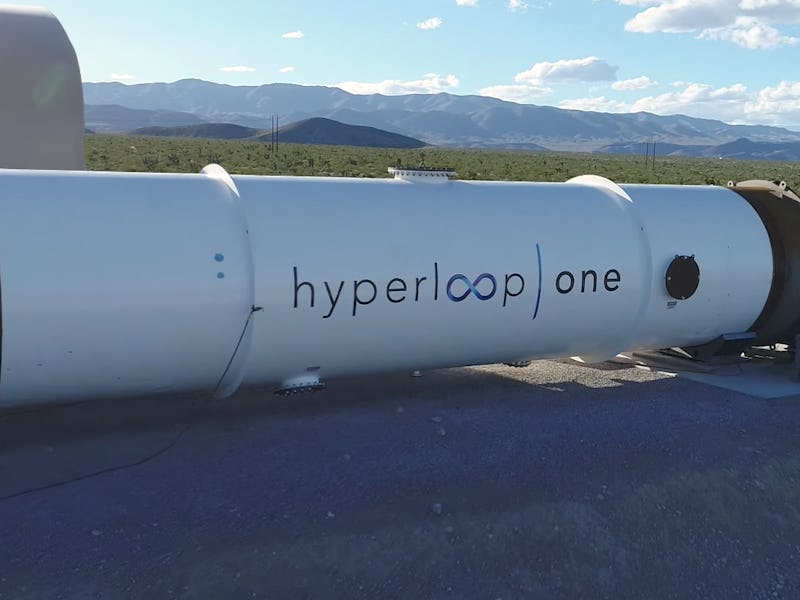Hyperloop One Has Stormed Ahead in the Year Since Its First Test

Hyperloop One has had an impressive year. Thursday marks the one-year anniversary of the company’s first public test of a prototype propulsion system, and in that year it’s gone from strength to strength in a bid to bring Elon Musk’s vacuum-sealed transport system to life. The company revealed 35 routes around the world that are under consideration for future feasibility studies (11 in the United States), while also announcing the completion of a full-scale test track in the Nevada desert. But despite these steps, Hyperloop One has yet to reach its “Kitty Hawk moment,” where the company finally completes a full public test on the track.
Musk first outlined hyperloop in a 2013 white paper, allowing third parties to develop their own systems based on his theories. With the reduced friction in a vacuum-sealed, depressurized tube, hyperloop could enable pods to move at speeds of up to 700 miles per hour, enabling trips from San Francisco to Los Angeles in around 35 minutes. Founded in June 2014, Hyperloop One’s ultimate goal is to bring three systems into service by 2021.
Hyperloop One has had a successful year, but it missed its end of 2016 target to reach its “Kitty Hawk moment,” a reference to the location of the Wright brothers’ historic flight. For the company, that means publicly demonstrating the technology at the Nevada test track, an event that will help attract investment and show the company’s progress. But the 2016 deadline became a March deadline, and that in turn became a June deadline.
“The next couple of months you’ll be getting an invitation,” CEO Rob Lloyd told Inverse when asked about the first public tests, speaking at a Washington D.C. company event on April 6.
The moment has been a key focus for the company ever since its first track test. Last year’s Propulsion Open Air Test, conducted in front of a small audience near Las Vegas, barely scratched the surface of the system’s potential, but represented the first step toward the company’s ultimate goals. The test system came together in just six months, and featured a pod traveling at 300 mph along a half-mile track that used sand as a buffer.
“There are many engineering milestones to bring hyperloop to reality and this is one of the bigger, more tangible ones,” co-founder Brogan BamBrogan said at the test launch.
Since then, the company has pushed further ahead in the race to hyperloop dominance. The following month, the company shared an image of the inside of a tube that would later form the basis of the world’s first full-scale hyperloop test site.
Construction started on the “DevLoop” in November, which while proposed to be 3,000 meters, ended up at 500 meters, or roughly a third of a mile. The tube became part of the final construction, which overall ended up weighing two million pounds. Located 30 minutes away from Las Vegas in the Nevada desert, the 10.8-feet wide tube placed Hyperloop One far ahead of its competition.
While construction was taking place, Hyperloop One was hosting a global design challenge to potentially find some of the first hyperloop routes. The initial competition attracted 2,600 entrants from around the world, all sketching out their ideas for routes. The eventual winner (or winners) will receive a feasibility study to help bring their idea to life.
In January, 35 semifinalists were announced. The company held special showcases in Dubai, New Delhi, and Washington D.C. this past spring, aimed at demonstrating how hyperloop could benefit the region. Eleven of the semifinalists were routes covering the United States.
In March, the company released some photos of the completed DevLoop:
That's a lot of tube.
It’s been an action-filled year for Hyperloop One, but the company seems well on its way to laying the groundwork for the first hyperloop systems. Next month’s self-imposed deadline to reveal more information about its “Kitty Hawk moment” is approaching fast, and the pressure is on to show the world what the past year’s progress means for hyperloop.